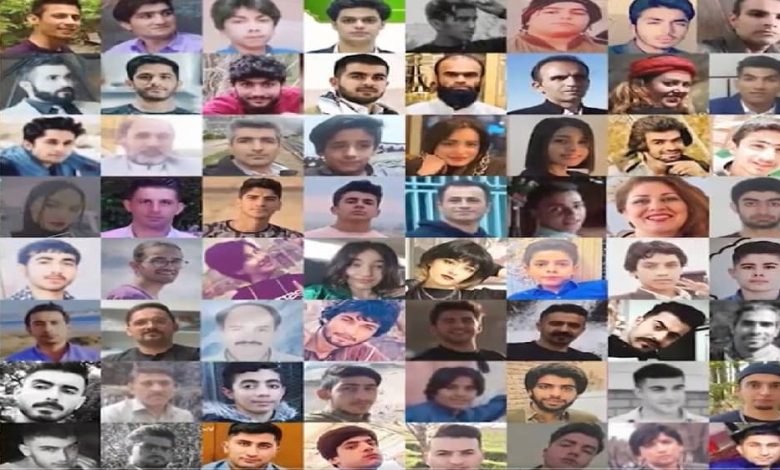Iran Revolution: “Resistance” at Any Cost

Written by
Moussa Afshar
On Thursday, several mourning ceremonies for the Iranian uprising’s martyrs snowballed into large anti-regime protests. Cities across Iran witnessed clashes between people and fully-armed security forces. Demonstrations continued one day after the regime’s Supreme Leader, Ali Khamenei, painted protesters as foreign agents, claiming the unrest had ended.
From Amol to Chaloos, Langerood, Mahabad, Islamabad, Qazvin, and Karaj, brave Iranians who had gathered to honor martyrs unanimously said: “Death to Khamenei” and “Death to the dictator.”
After experiencing the regime’s violence for decades, especially witnessing the death of hundreds of protesters, Iranians had nothing to lose but their fear. Now, they are fearlessly defying the regime’s oppression and continue their protests in a country where the entire security apparatus is organized to quash any voice of dissent.
The bravery of the Iranian people is only comparable to epic legends. But this bravery is not spontaneous. The major protests in Iran are indeed the society’s reaction to decades of the regime’s institutionalized corruption, mismanagement, ineptitude, and oppression. But as many experts have said, protests have morphed into a revolution. During their protests, Iranians say: “This is no longer a protest. It is a revolution.”
Indeed, there is a revolution in the making in Iran, and like any other major social development, pure humanitarian values are revived.
What happens on the streets across Iran is not a mere protest of economic or social restriction, nor is it limited to one generation. Although youth and women play a leading role in the current uprising, videos from Iran show older Iranians fighting alongside the new generation against the regime. The scenes of the martyrs’ mothers who bravely call their loved ones “children of Iran” are a testament to this fact.
I salute the mothers and fathers who at the graves of their loved ones urge people to rise up for freedom. Iranian youths and teenagers vow to stand to the end to overthrow the regime and achieve the ideals of their slain sisters and brothers. #IranRevoIution #IranProtests pic.twitter.com/ualgS3T96U
— Maryam Rajavi (@Maryam_Rajavi) November 2, 2022
Iran’s modern history is filled with role models of resistance and tenacity. The Resistance against the ruling theocracy began in 1981, when the regime’s then-supreme leader Ruhollah Khomeini, ordered his thugs to open fire on peaceful protesters in Tehran and other cities, who had rallied in support of Iran’s principal opposition, Mujahedin-e Khalq (MEK). The regime’s onslaught has never ended ever since. The 1980s is indeed the darkest chapter of the clerical regime. Tens of thousands of MEK supporters, primarily women and youth, were tortured and executed. In 1988, at least 30,000 political prisoners were executed across Iran and buried in mass graves such “Khavaran” gravesite near Tehran. Most of the victims were MEK members and supporters. Those brave souls marched to the gallows with clutched fists and defiantly chanting “freedom.”
In other words, they “resisted” at any cost. Therefore, in recent protests, people said: “From Khavaran to Evin prison, behold the sacrifices.” Iranian youth who risk their lives today follow in the footsteps of those young men and women who fell for freedom in the 1980s. They have learned from the past and are determined to make their future.
But the clerical regime has not learned its lesson. When in June 1981, Khomeini ordered the killing of peaceful protesters, the MEK described it as a “Step ahead of the Shah’s regime in brutality.” In his last months, the Shah increased its oppressive measures, but protests erupted each time people gathered to mourn martyrs on their martyrdom’s seventh and 40th day.
Mark Twain once said that “History never repeats itself, but it does often rhyme.” Though it seems that dictators are making the same mistakes over and over again. As religious fascism continues to kill unarmed protesters, the mourning ceremonies of its victims attract new masses, and such events snowball into greater anti-regime rallies, such as the protests on Thursday.
The Iranian regime is indeed in a deadlock. The increasing violence has had a reverse effect, and the regime cannot tolerate this dangerous cycle to spin ahead. The Iranian people are determined to topple the regime once and for all. Therefore, the international community recognizing the Iranian people’s right to self-defense is the most important and effective act of solidarity. This is the only practical way to help Iranians achieve what they have been yearning for decades: “Freedom, Freedom, Freedom.”
November 3 – Arak, central #Iran
Locals gathered to mark the 7th day of Mehrshad Shahidi's murder by the regime's oppressive security forces.
They're chanting: "Freedom! Freedom! Freedom!"#IranRevolution2022#مهرشادشهیدیpic.twitter.com/5I1AJRnhX1— People's Mojahedin Organization of Iran (PMOI/MEK) (@Mojahedineng) November 3, 2022

